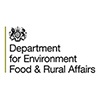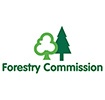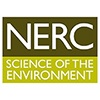
Global threats from Phytophthora spp.; understanding drivers of emergence and opportunities for mitigation through nursery best practice - Phyto-threats
Led by Dr Sarah Greene, Forest Research
Some of the greatest threats to our nation’s trees result from the introduction and spread of exotic pests and pathogens through plant imports and other infested material. Species of Phytophthora are particularly destructive plant pathogens worldwide, causing damage not only to forest and amenity trees but also to shrubs and important food and fibre crops. Over the past 13 years, five new species of pathogenic Phytophthora (Phytophthora ramorum, P. kernoviae, P. lateralis, P. austrocedri and P. pseudosyringae) have been detected in Britain, all capable of causing damage to trees across a range of different environments. In all cases, imported planting material has been either confirmed or strongly implicated as the most likely route of introduction.
We will study the distribution and diversity of Phytophthora species in water and plant samples collected from different UK plant nursery management systems, including those locations considered to be high risk in terms of importing new Phytophthoras, will be studied using state-of-the-art DNA sequencing technology. Water samples from streams and ponds in amenity environments will also be collected to investigate the wider distribution of nursery-associated Phytophthoras. This work will identify nursery practices resulting in the highest density and diversity of Phytophthora pathogens and the highest probability of onward spread into woodland or other natural ecosystems. These data will provide evidence to guide the development of a UK-wide voluntary nursery accreditation scheme. Nurseries signing up to the scheme will adhere to a set of ‘best practice’ criteria designed to reduce the risks of importation and dissemination of Phytophthoras. Feasibility assessments will involve consultation with nursery managers, consumers and other stakeholders in order to identify economic and social opportunities and barriers, and attitudes towards implementation of such a scheme. We will also explore options to promote the visibility and legitimacy of the accreditation scheme to consumers such that there is an added advantage for nurseries to take part.
Identifying future global Phytophthora threats and potential routes of entry will be essential in refining nursery ‘best practice’ and other national biosecurity measures. To do this, data on current known global distribution of Phytophthoras infecting woody species and biological characteristics that may affect establishment will be collated from databases and national surveys conducted in a broad range of countries. Models will identify those species occurring in locations resembling the UK’s climate and ecosystems and those species that are ecologically similar to Phytophthoras that have established in Europe, strengthening the evidence base for inclusion of pathogens in the UK Plant Health Risk Register. We will also look at the pathways of international trade and tourism and the risks of new Phytophthora introductions via these routes, identifying national focus points for biosecurity based on a raised risk that new Phytophthoras will arrive at these locations. Pathway analyses will be used to inform nursery managers and accreditation scheme criteria of the highest risk trade practices.
Current practices are increasing the diversity of co-existing Phytophthoras in the environment, yet we have little understanding of the potential for new aggressive Phytophthoras to arise through hybridisation or other mechanisms of genetic exchange when new species meet. Whole genome sequences of Phytophthora species will be examined to determine the extent to which genetic exchange has occurred among Phytophthoras and related organisms, and how this might have enabled these pathogens to adapt on to tree species, change virulence or host range. This work will enhance our fundamental understanding of pathogen evolution.
http://www.forestry.gov.uk/fr/phytothreats
This project is in partnership with Animal and Plant Health Agency, Centre for Ecology & Hydrology, Institute of Evolutionary Biology (University of Edinburgh), Science and Advice for Scottish Agriculture, The James Hutton Institute, University of Worcester (project participants).
Specific objectives to address the risks to UK tree species from Phytophthora introduction and spread by:
1. examining the current distribution and diversity of Phytophthoras in UK plant nursery systems,
2. providing the evidence base to refine nursery ‘best practice’ criteria for a UK-wide voluntary nursery accreditation scheme,
3. identifying those Phytophthora species not currently present in the UK but which pose the greatest threat to our ecosystems based on their biological traits and environmental profiles,
4. identifying key international pathways for Phytophthora spread and national points for biosecurity focus, and
5. understanding better the risk of genetic interaction occurring when Phytophthoras meet, resulting in new aggressive types.






